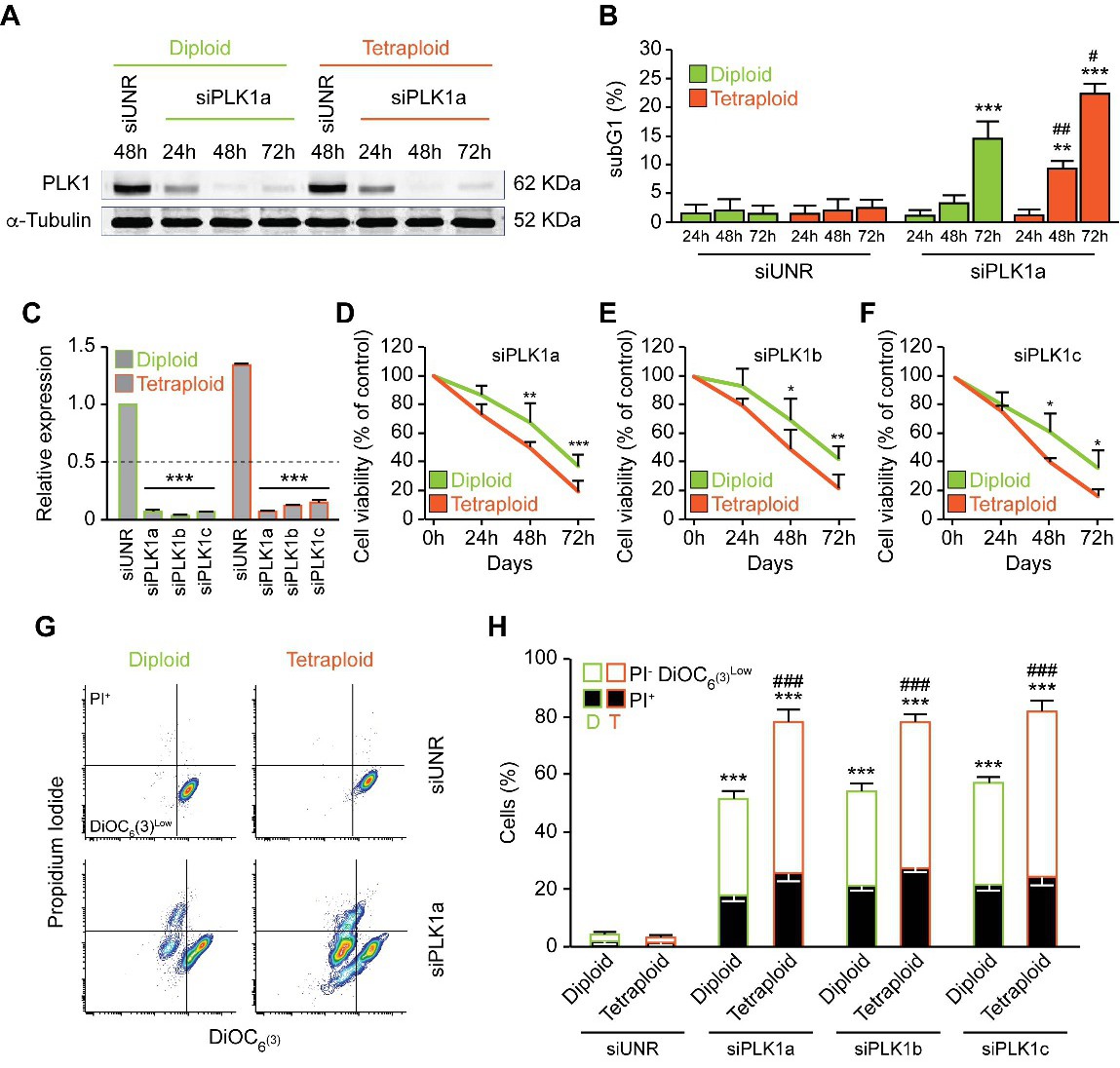Fig. 1. Preferential killing of tetraploid cells after PLK1 knockdown. A. Diploid (labelled in green) and tetraploid (labelled in orange) human colorectal carcinoma cells were transfected with an unrelated small interfering RNA (siUNR) or a SMARTpool siPLK1 (siPLKa). After 24, 48 or 72 h, the cells were collected and lysed before a western blot analysis using antibodies directed against PLK1 and α-tubulin as a loading control. B. Alternatively, cells were subjected to the determination of DNA degradation following the cell cycle subG1 population as a hallmark of cell death by flow cytometry upon cell fixation and propidium iodide (PI) staining. C. The knockdown efficiency of PLK using real-time polymerase chain reaction (PCR) in diploid and tetraploid RKO cells transfected with siUNR or three different siPLK1 (siPLK1a, siPLK1b and siPLK1c) for 48 h. D-F. Cell proliferation and death in cells transfected with siUNR or three different siPLK1 (siPLK1a, siPLK1b and siPLK1c) was examined after 72 h using a crystal violet assay. G-H. The cells were transfected with siUNR orthree different siPLK1 and co-stained with the vital dye PI and the mitochondrial membrane potential (Δψm)-sensing dye DiOC6(3) to evaluate cell-death-associated parameters by cytofluorometry. A representative histogram of RKO diploid and tetraploid cells transfected with siUNR vs siPLK1a is shown in (G), while quantitative data are represented in (H). The white and black columns depict the percentage of dying (PI−DiOC6(3)low) and dead (PI+) cells, respectively. Data are reported as means ± SD (n ≥ 3). ***p<0.001, **p<0.01, *p<0.05 (Mann-Whitney test), as compared to the control. ###p<0.001, ##p<0.01, #p<0.05 (Mann-Whitney test), as compared to diploid subjected to the same treatment condition.
